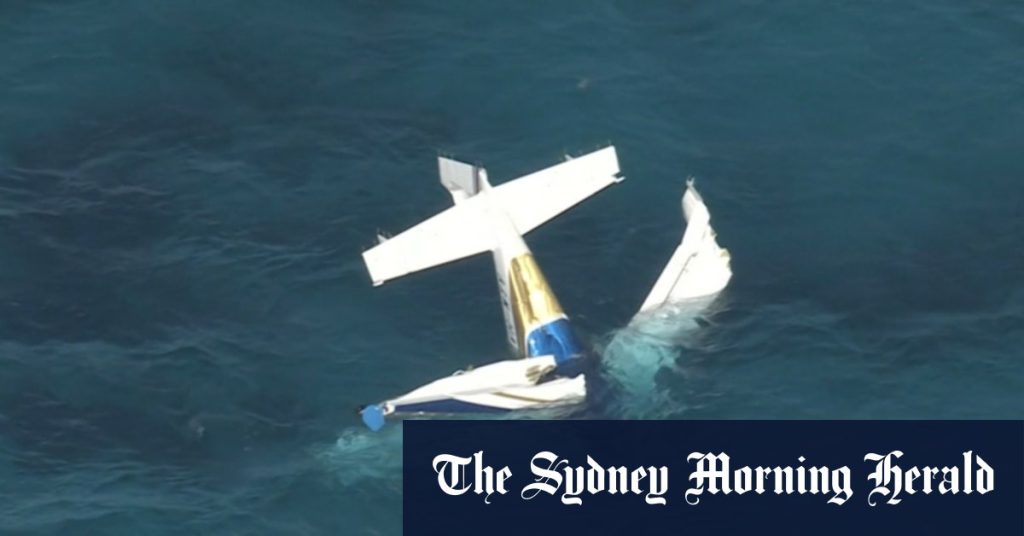The serene waters surrounding Rottnest Island, Western Australia, were shattered on January 8, 2025, when a scenic seaplane flight met a tragic end. The aircraft, carrying seven individuals, crashed into the ocean just off the island’s coast, claiming the lives of three passengers and leaving four others injured. Details surrounding the incident remain scarce as investigations are still in their preliminary stages. The idyllic setting of Rottnest Island, known for its pristine beaches, unique quokka population, and tranquil atmosphere, was abruptly transformed into a scene of tragedy and emergency response. The close-knit community, both on the island and in the greater Perth area, is undoubtedly reeling from the shock and profound sadness of the event. This incident marks a devastating blow to the region’s tourism industry and casts a somber shadow over the popular holiday destination.
The immediate aftermath of the crash saw a swift and coordinated response from emergency services. Rescue crews, including water police, paramedics, and volunteer lifesavers, raced to the scene to pull survivors from the wreckage and provide critical medical assistance. The injured were transported to mainland hospitals for further treatment. The severity of their injuries and their current medical status remain largely undisclosed as authorities focus on notifying next of kin and respecting the privacy of those affected. The wreckage of the seaplane has likely been secured as part of the ongoing investigation, crucial evidence that will be meticulously examined to determine the cause of the crash. A collaborative effort involving various agencies, including the Australian Transport Safety Bureau (ATSB), will work to piece together the events leading up to the tragedy and prevent similar incidents in the future.
The focus now shifts towards understanding the factors that contributed to this devastating accident. Potential contributing factors, while purely speculative at this early stage, could include mechanical failure, pilot error, unexpected weather conditions, or a combination of these factors. The ATSB will meticulously analyze the recovered wreckage, examine maintenance records, review communication logs, and interview witnesses, including any surviving passengers and potential eyewitnesses on the island or nearby boats. This comprehensive investigation will likely take months to complete, with the final report providing crucial insights into the sequence of events and identifying any systemic issues that need to be addressed.
The impact of this tragedy extends far beyond the immediate victims and their families. The Rottnest Island community, a tightly woven group that relies heavily on tourism, is grappling with the emotional toll of the incident. The island’s reputation as a safe and idyllic getaway has been shaken, and the long-term impact on tourism remains to be seen. The incident serves as a stark reminder of the inherent risks associated with air travel, particularly in challenging environments like coastal areas. It underscores the importance of stringent safety regulations, thorough maintenance practices, and robust emergency response protocols.
While the investigation unfolds, the focus remains on supporting the victims, their families, and the broader community affected by this tragedy. Grief counseling services and community support networks are being mobilized to help individuals cope with the emotional aftermath of the crash. The outpouring of support from the local community, the state government, and the nation as a whole highlights the collective empathy and resilience in the face of such a devastating event. The process of healing will be a long and difficult one, and the scars of this tragedy will undoubtedly remain on the hearts of those touched by this loss.
Ultimately, the investigation into the Rottnest Island seaplane crash aims to provide answers and prevent future tragedies. The findings of the ATSB will be crucial in informing safety improvements and enhancing regulations within the aviation industry. This tragedy underscores the continuous need for vigilance and rigorous safety standards to protect lives and maintain public confidence in air travel. As the community mourns the loss of life and supports the injured, the lessons learned from this incident will shape the future of aviation safety and hopefully prevent similar heartbreaks in the years to come.










